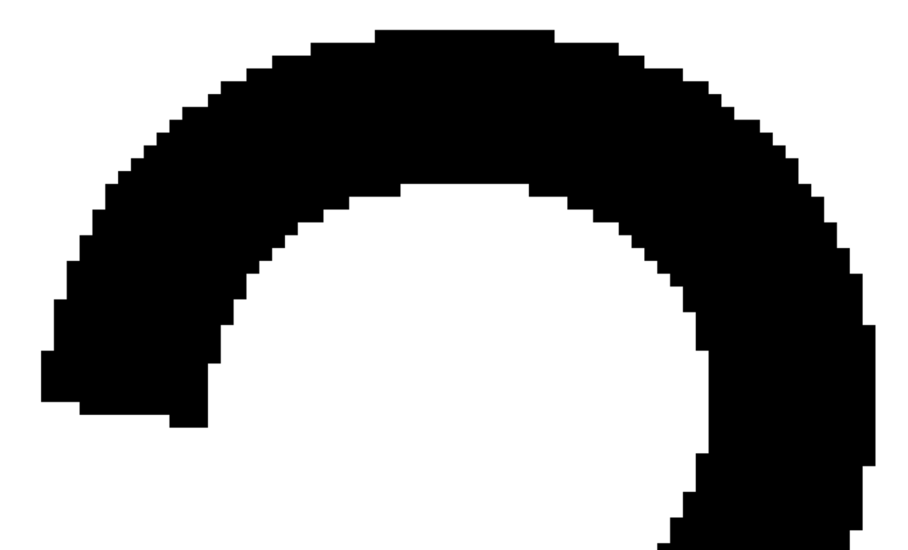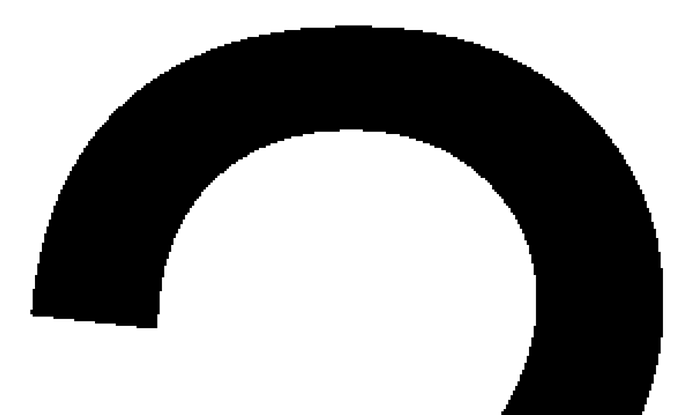Regarding what is going on in low-res mode, here is a sample of what the top of a “2” looks like at various DPI (72, 300, 600, 1000) when magnified (with no anti-aliasing). This could probably be another thread in itself - but the first thing that comes to mind is CICO - crap in, crap out. Don’t expect magic from files that are low-res to start with.
72DPI
300DPI
600DPI
1000DPI



